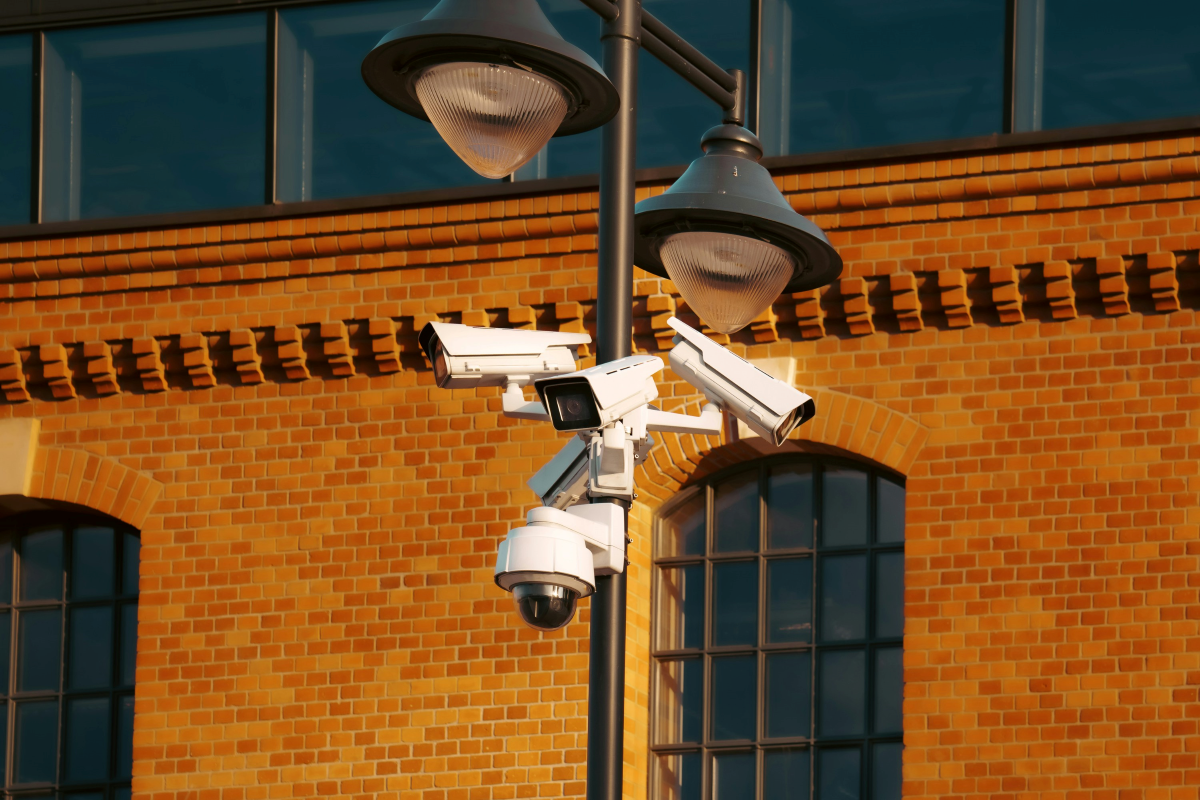
Traditional video surveillance systems have long served as passive recording devices, documenting criminal activity after it occurs rather than preventing it. Proactive Video Surveillance (PVS) represents a fundamental paradigm shift from reactive documentation to active crime prevention, combining real-time surveillance technology with immediate intervention capabilities to stop threats before they escalate into criminal acts.
Understanding Active vs. Passive Video Surveillance Systems
The distinction between active and passive video surveillance systems is critical for understanding proactive monitoring’s superior effectiveness in crime prevention. Active video surveillance involves real-time monitoring conducted by security personnel watching live feeds or through advanced Video Analytics and Artificial Intelligence (AI) systems that can trigger immediate responses. In contrast, passive video surveillance systems operate without active monitoring, relying solely on recording capabilities that can be reviewed after a security incident has already occurred.
The Critical Gap in Passive Systems
Detection alone is insufficient for crime prevention. Once a potential vandal, burglar, thief, or active threat is detected by passive systems, the typical response involves triggering alarms and notifications to initiate some form of delayed response. However, these reactive measures may be too late to prevent damage to property, theft of assets, or harm to people.
Research-Based Evidence of Surveillance Effectiveness
Extensive academic research provides compelling evidence for the effectiveness of proactive video surveillance approaches. A comprehensive 40-year systematic review and meta-analysis of video surveillance (CCTV) cameras shows that surveillance systems are associated with a significant and modest decrease in crime, with the largest effects observed in parking facilities where surveillance areas experienced a significant crime reduction of approximately 37% compared to control areas.
| Research Category | Finding | Crime Reduction | Source |
| Active vs. Passive Monitoring | Video surveillance schemes with active monitoring generated larger effect sizes than passive systems | Significantly higher effectiveness with active monitoring | 40-Year Systematic Review (Piza et al., 2019) |
| Parking Facilities | Most effective setting for video surveillance implementation | 51% decrease in crime | Welsh & Farrington Meta-Analysis (2009) |
| Vehicle-Related Crime | Strongest and most consistent effects observed in parking areas | 37% reduction compared to control areas | 40-Year Systematic Review (Piza et al., 2019) |
| Public Transit Systems | Moderate but measurable effectiveness | 23% drop in crime | Welsh & Farrington Meta-Analysis (2009) |
| City Centers | Limited but observable impact | 7% decrease in crime | Welsh & Farrington Meta-Analysis (2009) |
| Residential Areas | Significant crime reduction with proper implementation | 12% reduction compared to control areas | Multiple Studies Meta-Analysis |
| Public Streets & Urban Stations | Rigorous experimental designs show consistent results | 24-28% crime reduction | Randomized & Natural Experiments Review |
| Cost-Benefit (Chicago) | High return on investment with active monitoring | $4 saved for every $1 spent | Urban Institute Research |
| Cost-Benefit (Baltimore) | Positive but moderate return on investment | $0.50 return per dollar spent | Urban Institute Research |
| Multiple Interventions | Combined approaches more effective than standalone systems | Larger effect sizes when combined with lighting, security personnel | Systematic Review Meta-Analysis |
How Proactive Video Surveillance Works
Proactive video surveillance transforms passive recording systems into active crime prevention tools through three core mechanisms:
Real-Time Human Oversight: Trained security professionals monitor systems continuously, enabling immediate threat verification and intervention with live audio warnings and response protocols.
Advanced Detection Technology: AI-powered analytics perform motion detection, facial recognition, object tracking, and behavioral pattern analysis to distinguish between normal activity and genuine security threats.
Immediate Intervention Capabilities: When threats are detected, operators can deploy live audio warnings, alert law enforcement with verified information, activate on-site deterrent systems, and coordinate with on-site personnel.
Industry Applications and Effectiveness
Parking Facilities: Strongest crime reduction effects (50-51% reduction in theft-related crimes), particularly effective in isolated or poorly lit areas.
Commercial Properties: Dual-purpose systems deter criminal activity and provide investigative tools, preventing shoplifting, vandalism, and other crimes from escalating.
Residential Areas: 12% crime reduction compared to control areas when properly implemented.
Transportation/Public Spaces: Up to 23% crime reduction in transit systems when combined with active monitoring protocols.
Technology Integration
Modern systems integrate three key technologies:
Video Management Systems (VMS): Real-time analysis and alert generation based on predetermined criteria while minimizing false alarms.
AI and Analytics: Sophisticated neural networks for centralized deployment or embedded camera analytics.
Communication Systems: Two-way audio, mobile alerts, and direct law enforcement communication for rapid response.
Implementation Best Practices
Research-based guidelines for maximum effectiveness:
- Combine Multiple Interventions: Integrate with improved lighting, security personnel, and environmental design
- Target High-Risk Areas: Focus on parking facilities and locations with historical security challenges
- Ensure Active Monitoring: Human oversight or advanced AI monitoring is essential for optimal results
- Professional Training: Deploy trained staff with adequate camera coverage and integrated security protocols
Why Choose Professional Proactive Video Surveillance
Since 1946, Pye-Barker Fire & Safety has served as an industry leader, building trust through decades of reliable service to businesses across the United States. Our comprehensive security solutions integrate fire protection, life safety, and advanced video surveillance technology to provide complete protection for your property and personnel.
Our approach to proactive video surveillance incorporates research-based best practices, combining advanced technology with professional monitoring services to deliver measurable security improvements. With nationwide coverage and local expertise, we design systems that address your specific security challenges while maintaining the highest standards of reliability and effectiveness.
Our Integrated Security Approach Includes:
- 24/7 professional monitoring with rapid response protocols
- Advanced video analytics and threat detection systems powered by AI and human oversight
- Integration with existing fire and safety systems for comprehensive protection
- Comprehensive training and ongoing support to maximize system effectiveness
The key to successful implementation lies in understanding that surveillance technology is most effective when combined with professional monitoring, appropriate supporting measures, and strategic deployment in high-risk areas.
Contact the team at Pye-Barker today to schedule a site walk-through and security consultation for your buildings!